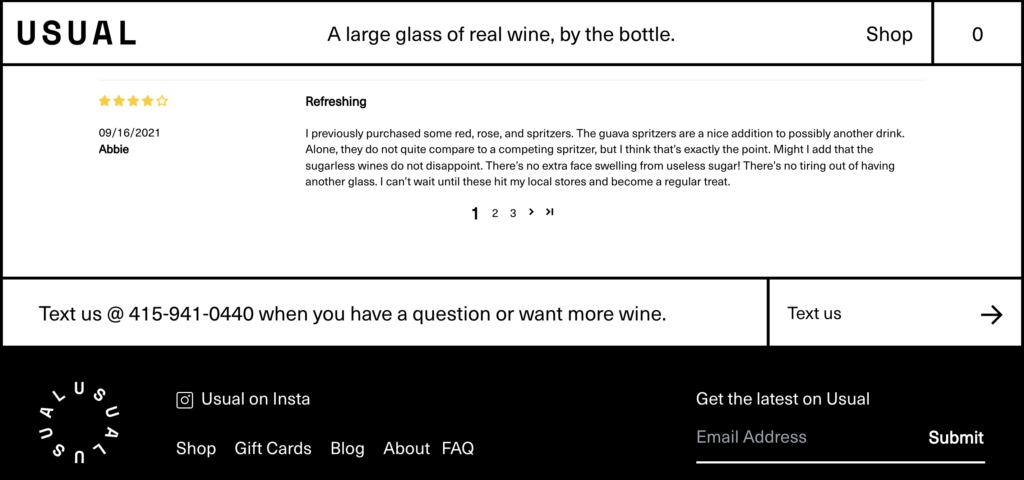Google Chrome has followed in the footsteps of Firefox and Safari after it announced earlier this year it will suspend the use of cookies.
The announcement was followed by confirmation that there will be no alternative third-party data collection supported by the web browser. Marketing professionals around the world will need to adapt and change their strategies.
In some cases, an entire strategy overhaul will be necessary. So it’s no surprise that the question remains for marketers: what does the future look like without third-party cookies?
What Are Third-Party Cookies?
Every day, most of us land on a new website and absentmindedly click ‘Accept all’ on the pop-up tab at the bottom of our screen.
That pop-up is a cookie agreement, and you’ve just allowed that website to track your browser activity.
If you’ve ever finished clothes shopping only to find your Facebook populated by ads from that specific clothes shop, they’ve used the little pocket of data, known as a cookie, to track your activity and target you with an ad.
The main controversy around cookies is that there is no requirement for the audience to opt out of the data being collected. For years they have been an effective way for marketers to reach their target audience.
What Do We Know About The Removal of Third-Party Cookies?
Despite being the dominant web browser, Google Chrome is the last of the top browsers to remove third-party cookies.
In January 2020, the web browser pledged it would remove all cookies by 2022. However, earlier this year the date was pushed back to 2023, in a bid to “avoid jeopardizing the business models of many web publishers which support freely available content.”
Between January 2020 and March 2021, the question of an alternative cross-site tracker was thrown around by industry professionals. However, Chrome confirmed there would be no replacement for cookies.
While the suspension date has been moved once before, the pressure to remove third-party data trackers continues to intensify, which means Chrome is unlikely to further delay the process.
The race is on for businesses and marketers to find alternatives to cookies, and at the forefront are first-party data sources.
Why Is Google Chrome Removing Third-Party Cookies?
Data protection has continued to increase with the volume and complexity of data and its sources.
The introduction of general data privacy regulation (GDPR) in the European Union set a precedent for countries around the world to better manage and control their data. In the U.S., the Federal Trade Commission enforces regulations to protect consumers.
In August 2019, Google revealed its Privacy Sandbox, an initiative from the company to create a ‘healthy web’. At its center is the battle between cross-site tracking versus the right to data protection and privacy.
Despite the official cookies announcement not being published until five months later, anyone who followed Google’s Privacy Sandbox was not surprised. Third-party cookies enable pervasive advertising and the call for their removal has long been heard by web browsers.
So, what does a cookie-less future look like for advertisers, agencies, and businesses around the world?
What is the Alternative to Third-Party Data?
Marketers around the world are trialing new ways to gather data.
Attention has turned to an alternative identifier in the form of first-party data as a way to build useful marketing profiles.
Google itself has claimed it will “continue to support first-party relationships on our ad platforms for partners, in which they have direct connections with their own customers.”
First-party identifiers in the form of phone numbers and email addresses offer a middle-ground solution for advertisers looking to understand the behavior and buying patterns of their audience.
With first-party data, you can directly market onto the screens and into the inboxes of your customers.
Email drip campaigns, SMS promos, and event reminders are just some of the ways you can use first-party data to reach your audience with direct marketing.
If you’re struggling to come up with imaginative ways to use first-party data, let’s delve into how other companies use it as part of their marketing strategy.
How Can Brands and Marketers Use First-Party Data?
First-party data is the key to overcoming the obstacles faced by the removal of cookies. Companies are already beginning to adopt first-party strategies to get ahead and begin building their rapport with customers.
Here’s how two companies have replaced cookies with first-part data.
How Usual Wines Uses SMS to Reach Its Audience
One company already using first-party data, is Usual Wines. The delivery wine company decided to build a two-way relationship with customers through SMS direct marketing.
Speaking to Digiday, the brand explained that by engaging in conversation with customers, it can build content and advertising strategies in line with what consumers want.
“We were able to effectively validate the product even before building and selling it based on having that direct line of communication,” co-founder Matt Dukes, told Digiday.
By utilizing a business messaging platform, the brand could gather data from its interactions to understand customer behavior and build a strong rapport with buyers.
The wine company uses a combination of outreach and support in its strategy. Anyone can text the number advertised on the Usual Wines website, which the company can then add to its contact list.
However, they only text customers when a new product drops or to share an exclusive promo code.
How CocoDoc Plans Its Marketing Strategy Around Consent
While third-party cookies have made life easier for advertisers, Alina Clark, Founder of CocoDoc admits that they also tend to be intrusive.
Alina shared with us that her company’s plan to get out of the third-party shadow revolves around getting consent from the consumer before marketing to them and focusing on brand loyalty.
“Businesses need to invest in creating their own data ecosystems. For us, this means creating a system where we can collect data from customers without intruding on their privacy,” Alina explained.
The company knows that the only way to collect data without being intrusive is to create a consent-based strategy. By using email lists and phone numbers, Alina confirms she believes CocoDoc will be ahead of the curve.
“Email lists, text messaging lists, and communities are set to make a huge comeback with the cookie apocalypse, and businesses need to be positioned for this.”
A strategy built around consent inspires brand loyalty as return customers know that their data isn’t being exploited.
Loyalty schemes can easily reach return customers as a result of acquiring contact lists, and customers will recognize the value offered by companies such as Cocodoc, lowering the churn rate.
That’s How the Cookie Crumbles
Whether you’re celebrating or commiserating, third-party cookies are on the way out. It’s up to businesses and marketers to ensure their advertising strategy isn’t impacted by last-minute plans.
First-party data is more valuable than ever before, and there’s never been a better time to start gathering data from your audience (with consent!).
If you’re looking to follow in the footsteps of UsualWines’ marketing strategy, start off with a 14-day free trial for business messaging.




